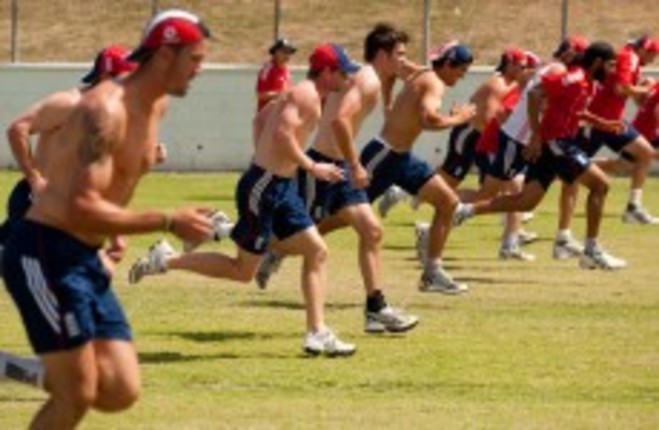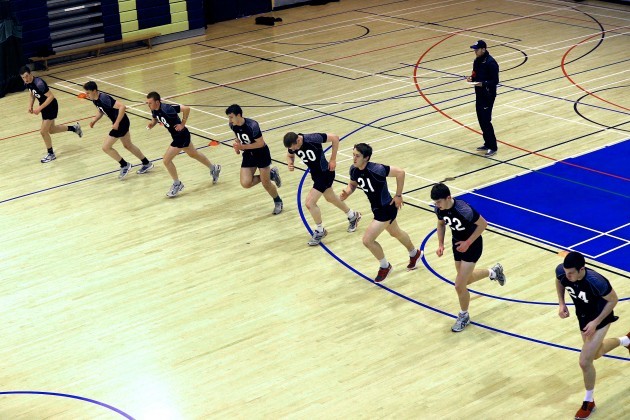IT’S ALMOST FEBRUARY, so we’d expect most GAA clubs in the country have gotten back to some form of pre-season training by now.
Incorporated in those gruelling Tuesday and Thursday night slogfests are everything from sand-dune runs, to laps of the field, to circuit training, to military-style training, to boxing.
Some training techniques have come and gone, but the Bleep Test — or multi-stage fitness test — is still one of the best ways to weed out those who enjoyed Christmas a bit too much.
Originally used as a way of monitoring the fitness of personnel working in the police service, army, military and sea cadets, the Bleep Test became synonymous with team sports in the late 1980s and is still widely used today.
Here’s how it works:
The test involves continuous running between two lines, 20 metres apart, in time to recorded beeps — preferably on concrete or wood flooring. Hence why it’s called the Bleep (or Beep) Test.
The subjects stand behind one of the lines facing the second line, and begin running when instructed by the recording. The speed at the start is slow. The subject continues running between the two lines, turning when signalled by the recorded beeps.
If the line is reached before the beep sounds, the subject must wait until the beep sounds before continuing. Each level incorporates 10 shuttle runs, after which a sound indicates an increase in speed, and the beeps will become closer together.
This continues each minute. If the line is not reached before the beep sounds, the subject is given a warning and must continue to run to the line, then turn and try to catch up with the pace within two more ‘beeps’. The test is stopped if the subject fails to reach the line for two consecutive ends after a warning.
Scoring: This is where the ridiculing starts. The athlete’s score is the level and number of shuttles (20 metres) reached before they were unable to keep up with the recording. So if a person got to level ‘10.7’, it would mean they got to Level 10, and the seventh shuttle run on that level. Three more successful runs and he or she would have made Level 11.
There are 21 levels in total. Lance Armstrong and David Beckham are two of the more well-known sportspeople who have finished out the test.
Fancy trying it yourself? All you need is a non-slip surface, marking cones, 20-metre measuring tape, Bleep Test audio and a whole lot of motivation.
And to help you, here’s that audio… spit bucket at the ready!


